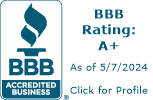If you own a business that relies on commercial vehicles keeping those vehicles on the road is the backbone of your business. With delivery trucks and company cars constantly grounded for repairs your employees will be unable to complete the necessary work to keep your company running smoothly. Properly maintaining commercial vehicles means your fleet works for you to make and keep your company successful.
While commercial fleet management is not a “one size fits all” solution, there are some basic steps that will help maintain all commercial fleets regardless fleet size. Relying on the steps below will have you well on your way to keeping your fleet at maximum productivity.
Preventative Maintenance
The cornerstone of properly maintaining any vehicle, including commercial fleet vehicles, is to make sure the vehicle receives regular preventative maintenance. Regular preventative maintenance including oil and other fluid changes, tire rotations, brake service, and tune ups help prevent larger issues from arising down the road. Taking care of commercial vehicles now, ensures they’ll last for their maximum lifetime and save you business money in the long-term.
To ensure your vehicles are receiving the proper and necessary preventative maintenance, it is important to keep accurate records for each vehicle. Utilizing fleet management software allows business owners and fleet managers to get automated notifications for scheduled maintenance based on vehicle usage. Following a manufacturer’s recommendation for a particular vehicle keeps that vehicle performing optimally and ensures you do not void any applicable warranties.
Proper preventative maintenance reduces the risk of breakdowns and expensive repairs. And improve the lifespan of your fleet.
Proactive Repairs
Even with proper preventative maintenance, breakdowns and accidents can take your fleet vehicles out of commission. Your business can bounce back more quickly after an accident or breakdown when you are proactive with repairs. Advances in technology to GPS tracking and management allow you to be notified of vehicle problems while they are minor. This allows you to prevent larger issues before they happen, and can alert you to problems before your drivers even notice there’s anything wrong.
Proactive repairs also mean less time in the shop and money saved on more expensive, time-consuming repairs. Additionally, for business that outsource repairs it will be easier to schedule proactive repairs with a reputable shop and your vehicles back on the road as quickly as possible.
Depend on Drivers
Your drivers are you first line of defense in properly maintaining commercial fleet vehicles. When a vehicle starts showing signs of impending issues or a breakdown, the driver is typically the first one to notice. Keep the lines of communication open with your drivers because they will be able to let you know when their vehicle is starting to pull in one direction or another and its time for an alignment, if the A/C isn’t working properly, or if the brakes are not performing the way they should.
Good business owners and fleet managers need to develop a system that designates when and where drivers are responsible for inspecting vehicles each day and provides a method for drivers to share any maintenance issues occurring on their vehicle. All employees, including drivers, should be well-trained on how these systems work.
Roadside Assistance Coverage
Even when a company has systems in place to properly maintain its fleet vehicles, breakdowns and accidents can happen. An important component of any fleet management plan is roadside assistance coverage. Commercial and fleet roadside service plans provide 24/7 coverage and rapid response times which help get your fleet vehicles to a repair shop and back on the road quickly. Bouncing back quickly after a breakdown or accident minimizes lost productivity, repair and downtime costs, and lost revenues.
Additionally, plans through companies like Best Roadside Service are customizable to make sure you’re meeting the specific needs of your employees and customers as well as your business. This allows you to more efficiently schedule preventative maintenance and proactive repairs while considering the individualized needs of your business and fleet.
Don’t wait for your vehicles to break down before you decide start thinking about fleet maintenance. Develop a fleet management plan before you need it, and use preventative maintenance, proactive repairs, dependable drivers, and roadside assistance service coverage to keep your commercial vehicles running and your business operating smoothly.





